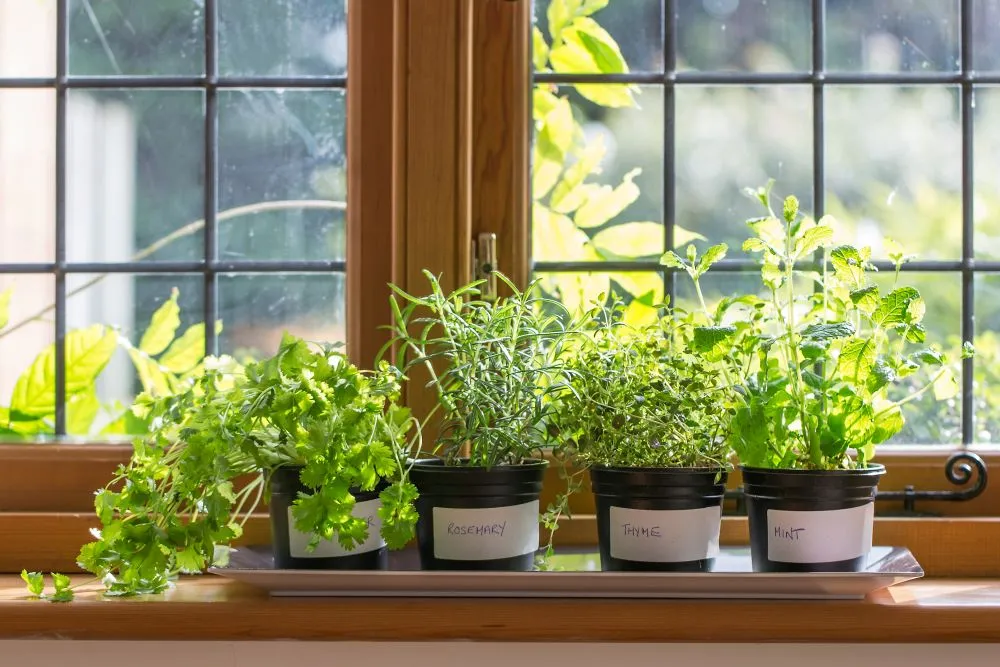Your guide to growing: top springtime garden tips

Shaking off the frost of winter and stepping into spring is always a happy moment. But for home gardeners it’s especially exciting, as the natural world bursts back to life. The warmer days and longer evenings mean there’s ample opportunity to get stuck in and set your garden up for a great growing season ahead. Whatever your garden goals, here’s some handy tips to help you get growing!
How to get your garden ready for spring?
1. Check your supplies
Before you begin, take a look at your tools, equipment and supplies and see what condition they’re all in. There’s nothing worse than starting a project before realising you’re missing key items!
Your tools may need some TLC before you get going properly, or some may need replacing. Trowels and forks can be washed with a mild soap and warm water, while larger pieces of equipment like rakes and shovels can be hosed down. You can use a wire brush and a damp cloth to clean wooden handles, then treat the clean, dry handles with mineral oil to keep them in good nick.
Take an inventory of your seeds, bulbs and other supplies. Many will last a couple of years, but the germination rate of seeds declines does decline as they get older. But by organising your stash, you’ll have a clear picture of what you do and don’t need to purchase.
2. Weeding and mulching
It’s important to prepare your soil before you start planting again in Spring. If you spot any weeds that have sprung up, pull these before they become a nuisance. You can also mulch the borders of your flower beds with compost to help suppress weeds and trap moisture within the soil.
3. Start planting
Once the soil gets warm enough, you can start planting. Now’s a great time to start growing your own. Potatoes and onions work well, as does hardy vegetables like peas, beetroot and lettuce.
You can sow these veggies, along with spinach, broad beans, cabbage, turnips and more, in module trays indoors and plant them outside when they’re big enough to handle, or straight into the ground by thinning out the seedlings based on the distances on the seed packets.
4. Refresh long-term pots
If you’ve got perennials or shrubs, you can give these a boost by scraping off the top few centimetres of compost, and replacing it with a fresh batch. March and April are also good times to plant new perennials and sow hardy annuals like marigolds.
5. Take care of wildlife
Spring is the time for all the wonderful wildlife the UK has to offer wakes up – and it’s important that we take care of all creatures and critters. When you’re gardening, take care not to disturb nesting birds and always check hedges and shrubs carefully before pruning. There may be insects, amphibians or even a hedgehog nesting.
Many people also bring out their lawnmower at this time, ready to start regularly mowing again. But you might decide to join the growing trend of leave some or all parts uncut for a few weeks at a time.
This will allow clover, daisies and other species to flower, providing pollen for bees and more!
Growing in small spaces
Not everyone has access to a big garden. If yours is on the smaller side, or you have a patio, terrace, then container growing could be for you.
Herbs such as parsley, basil and thyme will grow well in pots, and you can keep these near the kitchen door or on a windowsill for easy access when you’re cooking. But you can also try different bulbs and annuals like petunias and geraniums.

Hardy succulents such as sempervivums and crassulas can create unqiue displays in the gaps between paving or in the dry soil at the base of a wall. These tiny plants will add a dash of greenery to tiny spaces, and last a long time.
A few pots of plants, herbs and flowers, all blooming in their own way will make a big difference in terms of brightening up your home.
Budget-friendly garden tips
With everything costing more at the minute, we’re all looking for ways to save, wherever we can. Relaxing in our outdoor spaces at home is one of life’s simple pleasures. So how can you spruce up your garden, without forking out?
It’s worth thinking about items you already have, or that can be easily collected that can be repurposed and given a new lease of life. For example, pallets can be sourced for free or cheaply and repurposed as planters, raised beds or insect shelters.

Avoid any with MB or SF markings as these can have harmful chemicals or pallets that are already blue as these are used in the export industry and are not free to use. Once you have some to use, you can wash them and leave as they are or paint them to add a pop of colour.
Other items you can use include bottle corks for edging, old dishes and trays for fast-growing crops like rocket and salad leaves, and plastic milk bottles for plant labels. Just make sure to use waterproof markers so your writing doesn’t get rained off!
Of course, you can also make your plants go further by taking softwood cuttings. Between March and August is the prime time to take cuttings, using a sharp garden knife and secateurs to avoid infection. Choose a healthy, pest-free and non-flowering shoot from the parent plant and cut a 3-6-inch-long piece from the stem, at a 45-degree angle. You can plant these in most potting soil, and transfer to larger pots or the garden once they’ve rooted.
Looking out for your garden

If you’re putting all this effort into your garden, you’ll want to make sure it’s covered effectively. Your local Howden branch will be happy to help you look at your existing home insurance policy to understand what’s covered.
Our branch experts will also be able to share with you our new Money Savings eBook. You see, we’re on a mission to not only help you save money on your insurance, but also on your shopping, energy bills and more! Click here to download your copy for FREE.
Simply search Howden Insurance, find your local team and visit them in branch or given them a call.
Sources: Which? Gardeners World, National Trust



